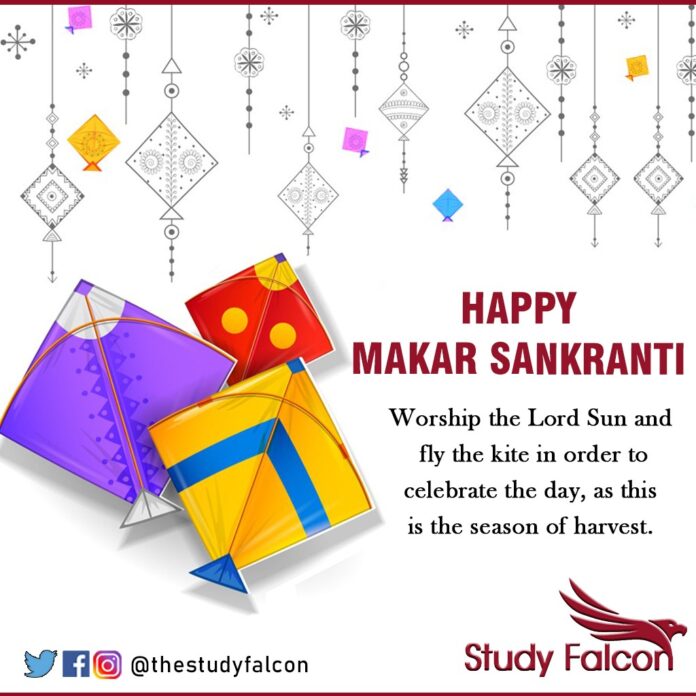Makara Sankranti or Maghi is a festival day in the Hindu calendar. It is observed each year in the lunar month of Magha which corresponds with the month of January as per the Gregorian calendar and is a day the people of India celebrate their harvest.
Sankranti is deemed a Deity. He killed a devil named Sankarasur. The day next to Makar Sankrant is known as Karidin or Kinkrant. On this day, Devi killed the devil Kinkarasur. The information of Makar Sankranti is available in Panchang which is the Hindu Almanac that provides information on the age, form, clothing, direction, and movement of Sankranti.
According to the DrikPanchaang, “The time between Makar Sankranti and 40 Ghatis (roughly 16 hours for Indian locations if we consider 1 Ghati duration as 24 minutes) from the time of Makar Sankranti is considered good for auspicious work. This duration of forty Ghatis is known as Punya Kaal. Sankranti activities, like taking bath, offering Naivedhya (food offered to deity) to Lord Surya, offering charity or Dakshina, performing Shraddha rituals, and breaking fast or Parana, should be done during Punya Kaal. If Makar Sankranti happens after Sunset then all Punya Kaal activities are postponed till the next Sunrise. Therefore, all Punya Kaal activities should be done in the day time.”
Every year, Makar Sankranti is celebrated in the month of January to mark the winter solstice. This festival is dedicated to the Hindu religious sun god Surya. This significance of Surya is traceable to the Vedic texts, particularly the Gayatri Mantra, a sacred hymn of Hinduism found in its scripture named the Rigveda.
Makara Sankranti is regarded as important for spiritual practices and accordingly, people take a holy dip in rivers, especially Ganga, Yamuna, Godavari, Krishna and Kaveri. The bathing is believed to result in merit or absolution of past sins. They also pray to the sun and thank for their successes and prosperity. A shared cultural practices found amongst Hindus of Nepal and various parts of India is making sticky, bound sweets particularly from sesame and a sugar base such as jaggery. This type of sweet is a symbolism for being together in peace and joyfulness, despite the uniqueness and differences between individuals.
For most parts of India, this period is a part of early stages of the Rabi crop and agricultural cycle, where crops have been sown and the hard work in the fields is almost over. The time, thus, signifies a period of socializing and families enjoying each other’s company, taking care of the cattle, and celebrating around bonfires, in Maharashtra the festival is celebrated by flying kites.
Makara Sankranti is an important pan-Indian solar festival, known by different names though observed on the same date, sometimes for multiple dates around the Makar Sankranti. It is known as Pedda Panduga in Andhra Pradesh and Telangana, Makara Sankranti in Karnataka and Maharashtra, Pongal in Tamil Nadu, Magh Bihu in Assam, Magha Mela in parts of central and north India, as Makar Sankranti in the west, Maghara Valaku in Kerala, and by other names.
On the auspicious day of Makar Sankranti, any meritorious deeds or donations are fruitful. Haldi Kumkum ceremony is performed in a way that invokes the waves of quiescent Adi – Shakti in the Universe to get triggered. This helps in generating an impression of Sagun devotion on the mind of a person & enhances the Spiritual emotion to God.










